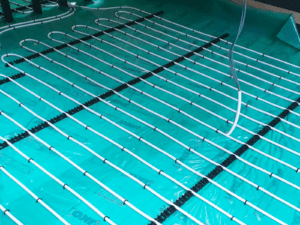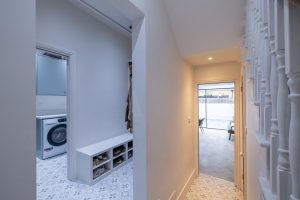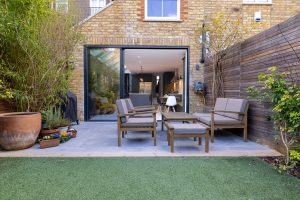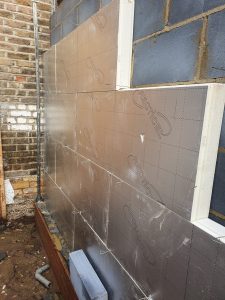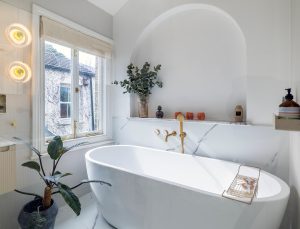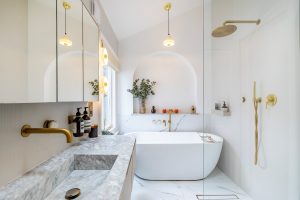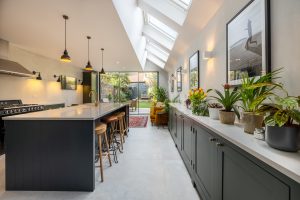A successful renovation goes beyond immediate upgrades – it’s about ensuring that your home remains functional, comfortable, and valuable for years to come. Futureproofing involves making smart, forward-thinking design choices that blend lasting style with practicality. Whether you’re building from scratch or updating an existing space, focusing on key areas that boost both usability and long-term value will ensure your home stays a worthwhile investment for the future. Here are some essential features to consider for enhancing your home’s longevity and adaptability.
Smart Technology
Smart technology is no longer just a luxury—it’s rapidly becoming an integral part of modern homes. Incorporating smart home systems can improve convenience, safety, and energy efficiency. From voice-activated controls to integrated security systems, the possibilities are endless.
Start by installing a centralised smart home hub that connects your devices. This allows you to control everything from lighting to heating, entertainment systems, and even appliances with a simple tap on your smartphone or a voice command. Smart thermostats, for example, allow you to adjust the temperature remotely, saving energy and lowering your bills in the process. Similarly, smart lighting systems can be programmed to turn on and off at certain times or adjust based on the natural light levels in a room, contributing to both energy savings and comfort.
Consider future trends when installing wiring and outlets—ensuring your home is ready to integrate with emerging technologies. Homes designed with flexibility to upgrade or expand smart systems will have significant long-term value.
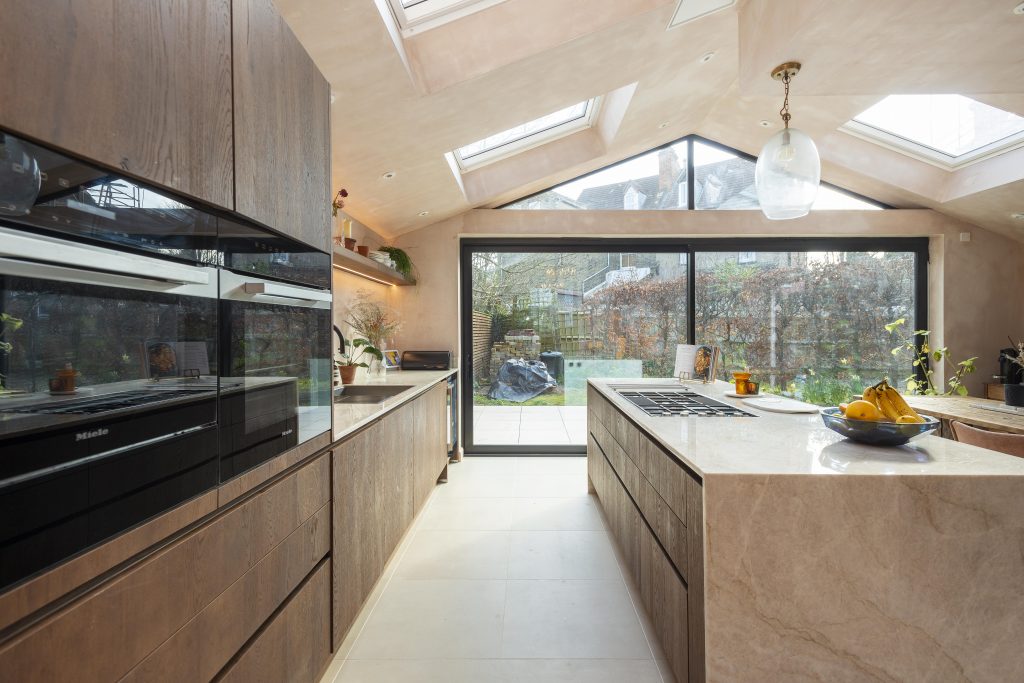
Efficient Storage
Storage is an often-overlooked element of home design, but it plays a crucial role in keeping your space organised and clutter-free. As families grow and change, so do their storage needs, so it’s essential to plan for ample and flexible storage options.
Consider built-in solutions that make the most of unused spaces—under stairs, in alcoves, or even integrated into furniture. Custom cabinetry, adjustable shelving, and modular storage systems can evolve with your needs over time. Think about future uses when designing storage and create spaces that can accommodate everything from children’s toys to home office equipment or hobby supplies as your life changes.
By ensuring your home has plenty of efficient storage, you’ll also protect its long-term value, as potential buyers will see it as a practical and adaptable space.
Multi-Purpose Spaces
Modern homes need to be flexible. With more people working from home, homeschooling, or simply seeking versatile spaces, multi-purpose rooms have become a must-have feature. Designing rooms that can serve more than one function will help ensure your home is adaptable to whatever the future holds.
For example, a guest room that doubles as a home office, a playroom that can later transform into a study space, or a dining room that opens into a living area can make the most of your home’s square footage. Movable walls, fold-away furniture, and modular designs can further enhance this flexibility. By thinking beyond single-purpose rooms, you’ll create a home that grows and changes with your family’s needs.

Energy Efficiency & Sustainability
Energy efficiency and sustainability are critical components of futureproofing any home. As energy prices rise and environmental concerns grow, making your home more energy-efficient will save you money in the long run while also increasing its market value.
Start with insulation—ensure your walls, roof, and floors are well-insulated to prevent heat loss. Opt for energy-efficient windows and doors to maintain a stable indoor climate. You can also invest in renewable energy solutions like solar panels or ground-source heat pumps, which may require a larger initial outlay but will pay off in reduced utility bills and potential government incentives.
Sustainability is increasingly important for buyers too. Using eco-friendly building materials, installing water-saving fixtures, and incorporating passive solar design principles (such as orienting windows to capture the sun’s natural heat in winter) are great ways to futureproof your home for a more sustainable future.
Open-Plan Design
Open-plan layouts remain one of the most desirable features for homeowners, and they’re unlikely to go out of style anytime soon. By removing unnecessary walls and creating seamless connections between living, dining, and kitchen areas, you can create a sense of spaciousness and flow that’s perfect for modern living.
An open-plan layout not only enhances the sociability of your home but also provides flexibility for reconfiguring spaces over time. As family needs change, an open plan allows you to adapt without the need for major renovations.
That said, balance is key. You might still want to incorporate areas where privacy is possible, such as separate home offices or cosy nooks. This gives you the best of both worlds: a flexible, social space alongside quiet, private areas for focused work or relaxation.
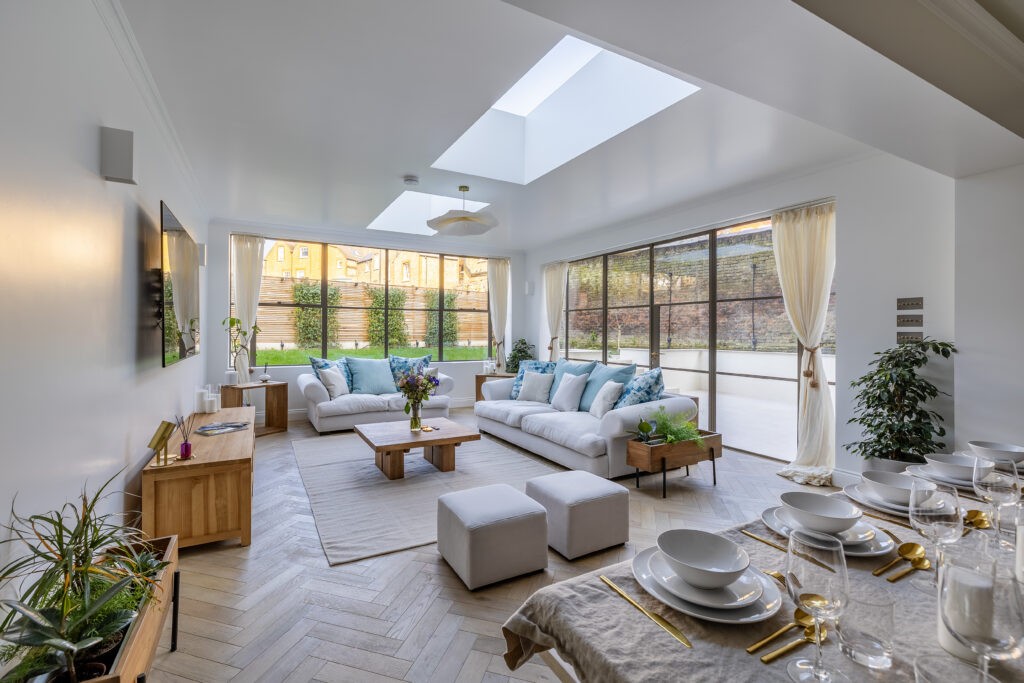
Maximum Natural & Artificial Lighting
Maximising natural light is not only good for your health and well-being but also for the value of your home. Homes that feel bright and airy tend to be more attractive and can appear larger. When designing or renovating, think about how you can introduce as much natural light as possible, through features like larger windows, skylights, or even glass doors that open onto garden spaces.
If natural light is limited, especially in the UK’s darker winters, artificial lighting becomes crucial. Layer your lighting for maximum effect, using a combination of ambient, task, and accent lighting. LED lights are energy-efficient and offer a variety of options for dimming and colour control, allowing you to set different moods in your home. Having a flexible lighting plan ensures your home will be as comfortable and functional at night as it is during the day.
Upgrade Glazing
Upgrading the glazing in your home is one of the most effective ways to futureproof it. Modern double or triple glazing offers better insulation, helps reduce energy bills, and improves soundproofing—especially important if you live in a noisy area.
Opt for windows with low-emissivity (low-E) glass, which helps reflect heat back into your home while allowing sunlight to pass through. This keeps your home warm in the winter and cool in the summer, reducing your reliance on artificial heating and cooling systems.
Additionally, well-insulated, high-quality glazing can make your home more eco-friendly and reduce its carbon footprint, a consideration that’s becoming more important for homeowners and buyers alike.
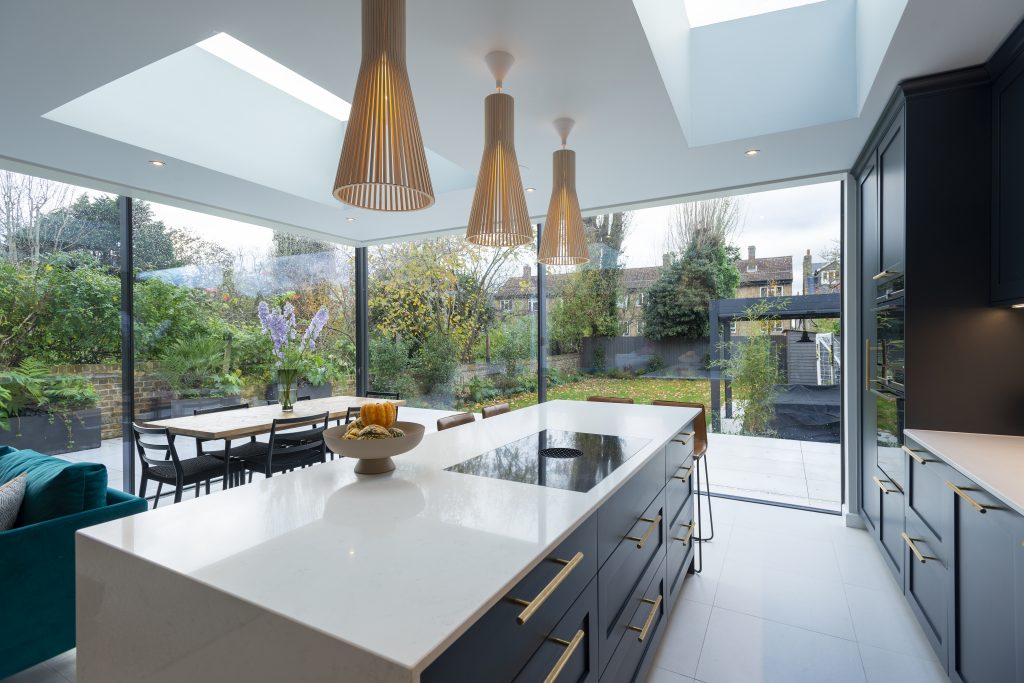
Design for Adaptability
Futureproofing your home means designing it in a way that can evolve as your lifestyle, family size, or health needs change. One of the most effective strategies for this is designing for adaptability. Think long-term—will you be able to age in place comfortably? Could the layout accommodate mobility aids or wider doorways if needed?
Consider installing features like walk-in showers, easy-access storage, and non-slip flooring that can cater to different stages of life. You don’t need to make your home look clinical—many of these elements can be seamlessly integrated into a stylish design.
Also, think about how your home can cater to future technological advances. Installing extra wiring or smart home systems that can easily be upgraded will save you from needing major electrical work down the road.
Futureproofing for Climate Change
As climate change leads to more extreme weather patterns, it’s wise to think about how to protect your home from flooding, excessive heat, or droughts. In the UK, heavy rainfall and floods have become more frequent, so measures like permeable paving, rain gardens, and improved drainage systems can help mitigate these risks.
Investing in drought-resistant landscaping, water-saving appliances, and cooling solutions like shaded outdoor spaces can make your home more resilient to the warmer summers that are predicted in the coming decades.
In conclusion, futureproofing your home is about making it adaptable, efficient, and resilient for years to come. From smart technology and energy efficiency to thoughtful design choices like maximising natural light and creating multi-purpose spaces, you can ensure your home not only meets your current needs but continues to provide comfort, functionality, and value long into the future. By taking these steps now, you’ll create a space that can grow with you and maintain its appeal to future buyers as well.


